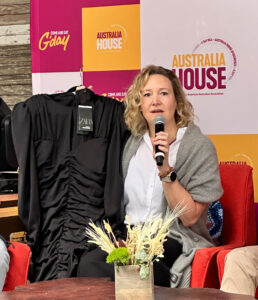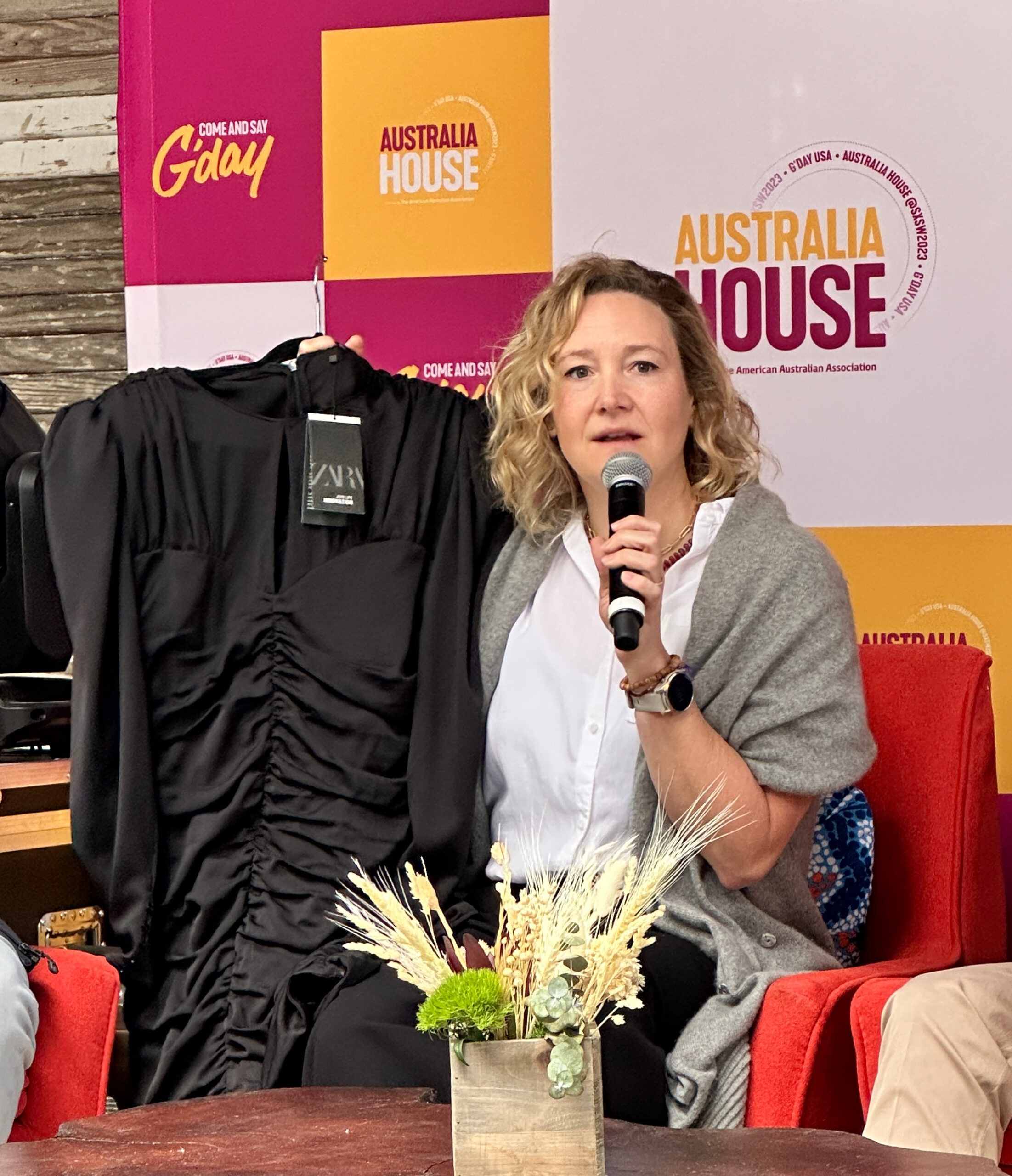What to do with all that carbon dioxide and methane polluting the atmosphere? Instead of trying to eliminate them, which is the goal of many countries flailing to achieve a goal in 2050, a group of scientists is already transforming them. It was the subject of a panel hosted by Australia House, at SXSW in Austin this week.
Dr. Ezhil Subbian (CEO of StringBio with a PhD in molecular biology) explained that “we can actually convert the energy that is in a gas like methane and carbon dioxide and make useful products out of it. Products that we can wear, eat and use in everyday living. For example, at String we are working to convert methane into protein and into food. We are all ultimately carbon lifeforms and here we are talking about the next generation of carbon products which is waste gases to useful things.”
Dr. Zara Summers (vice pres. of science at Lanzatech) actually showed the audience something very practical her company has produced. Holding up a beautiful black dress created from waste gases (lead photo) Summers said her company was “looking for a way to produce biofuels and other products without competing with food, land usage, water and all those key critical components we want to protect and use well.” They identified an abundant carbon source located in a single point. “Instead of a fuel stack spewing it into the atmosphere, we are actually diverting emissions out of a steel mill or refinery. Now we have five operating commercial plants in the world converting carbon today. Carbon is not the enemy!” she declared.
Dr. Jay Kim (plasma physicist, founder and CEO of Recarbon) said “global warming should not be our legacy. That’s why we started Recarbon in 2011. We are located in Silicon Valley. What we are trying to do is delivering solutions for a better world. We need to restore the Earth, so that is our mission.”
Kim said “plasma is a partially ionized gas. Carbon dioxide is a byproduct from burning fossil fuels such as oil or gas. It is a very stable molecule: to break it apart you need a very energy-efficient technology.” After ten years, he “came up with a microwave plasma technology running at atmospheric pressure to convert both cardon dioxide and methane into syngas, a mixture of hydrogen and carbon monoxide. From syngas we can make many end-products including ethanol (we are working with Lanzatech on this), hydrogen and sustainable emission fuel.” In addition to the industrial carbon dioxide emitters identified by Summers, Kim also targets landfill biomass sites as major emitters.
Summers said the “organisms we use are an ancient life form. Well before Earth was hospitable to any of us, the atmosphere was full of reduced gases. There was no oxygen present. Carbon monoxide, hydrogen, and carbon dioxide: what Jay just said he makes. One of the first metabolisms that evolved on Earth, called an acetogen, do not live in the presence of oxygen. We provide them with reduced gases to move their electrons. Instead of breathing oxygen they spit out ethanol. Through the power of synthetic biology we can bend these organisms to our will.”
In a humourous aside, she quipped that “Microbiology is great because there’s no one saying ‘Fight for the rights of the microbes!’”
Summer explained that “Not only can we make ethanol, we can genetically modify the acetogen to make more than 100 different products. Those products are precursors to everything you are wearing and things you need to survive your life. Imagine a world where instead of a barrel of oil, you’re just providing reduced gases to this very unique organism and its spitting out product A, B or C. You can be working out on the beach in yoga pants made from landfill carbon.”
Looking to the future, Summer envisions a day when “instead of having huge industrial complexes where you have a huge steel unit for each product, we have single reactor units that could change from month to month what product they’re producing,” simply by changing the organism in the unit. “You can have a much smaller footprint and a more distributed model.” The implications for using such small units in developing countries is enormous.
A pilot project is underway in Perth, Australia, which has only one landfill. People getting rid of the compost from their backyard are being given special bins to put that in, and once taken to the landfill all of that will be concentrated in one place, where the technology discussed here will be used to covert its emissions into products.
Photo: Dr. Zara Summers, vice pres. of science at Lanzatech
SXSW concludes Mar 19, 2023. www.sxsw.com

